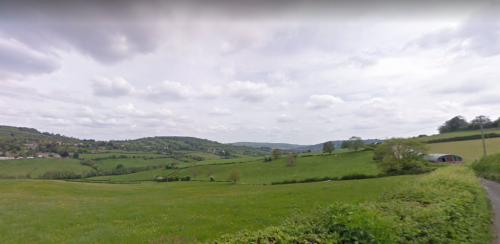
The Woolley Valley is located on the outskirts of the World Heritage City of Bath. The valley is classified as part of the Cotswolds Area of Outstanding Natural Beauty (AONB) and designated Green Belt land. In 1992, the Valley was deemed so special that it was placed under an Article 4 Direction, which removed Permitted Development rights as to protect its intrinsic rural character and natural beauty.
2012 – Applications for a Stock Pond and Alterations to the Existing Agricultural Building
Retrospective applications 12/05660/FUL, 12/05664/FUL, and 12/05663/FUL were all refused on grounds of harm to the Green Belt.
2010 – ‘Save Woolley Valley’ Campaigning & Judicial Review
Golden Valley Paddocks have been proceeding to develop land within the valley since 2010. Five planning applications for development have been submitted over the last two years, all of which have resulted in refusals. Despite this, no enforcement action has been taken by B&NES Council and development is still continuing.
Major alterations have been made to the existing access, barn, and land. A mobile home has been placed on the site and there are major alterations taking place on the land with the erection of ten significantly large chicken barns. The development has already caused major problems relating to noise, visual impact and changes in water courses adversely affecting local farmers and residents. This development is destroying the beauty of the valley and its unspoilt rural character – the very aspects which have given the valley its special status.
In 2010, Save Woolley Valley took the development to the High Court on grounds that the local planning authority had failed to implement planning law, and the scheme if left would set a harmful national precedent. The applicant had argued that planning permission was not required for the structures. The Council decided that the placing of the poultry units on the land at the site did not constitute development as these were “mobile” (located on skids and moved around the site several times annually” and as such no environmental impact assessment of that activity was required and no enforcement action could be taken.
The judge concluded that that “the Council misdirected itself in law in its interpretation and application of the term “development” in s.55 TCPA 1990”, and “the Council acted unlawfully by granting planning permission without having carried out a lawful screening opinion.” Subsequently, both judicial reviews were allowed. You can see the judgement in full here.
Read our response to 10/04188/FUL to retain a stock pond here.
2008 – Application for a New Agricultural Building
Read our response to application 08/02397/FUL for the erection of an agricultural building and mobile home for an agricultural worker here.

